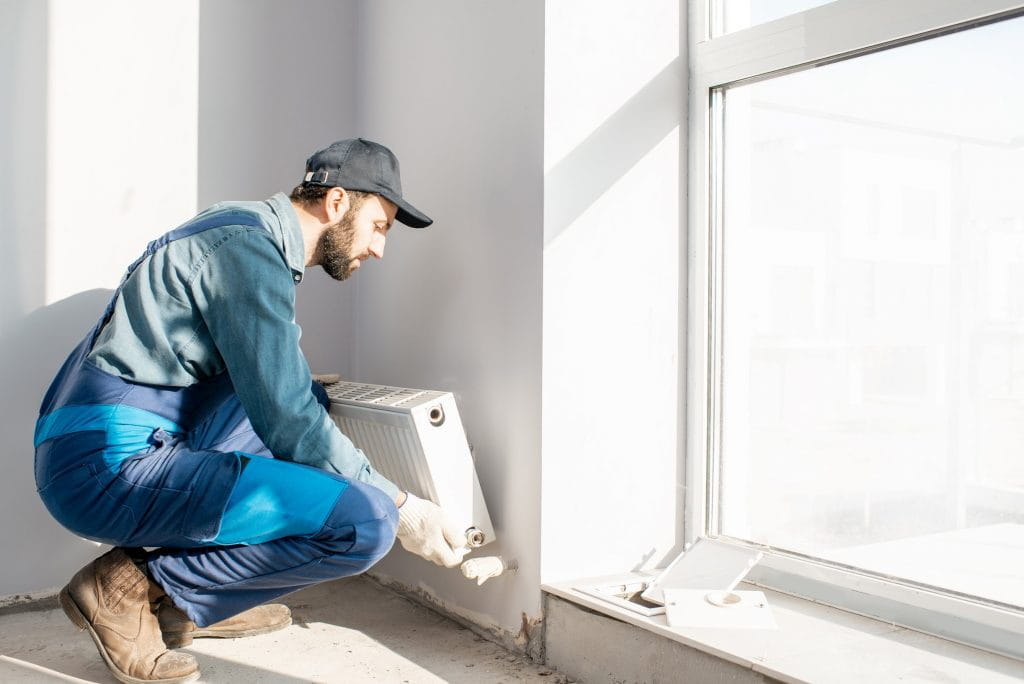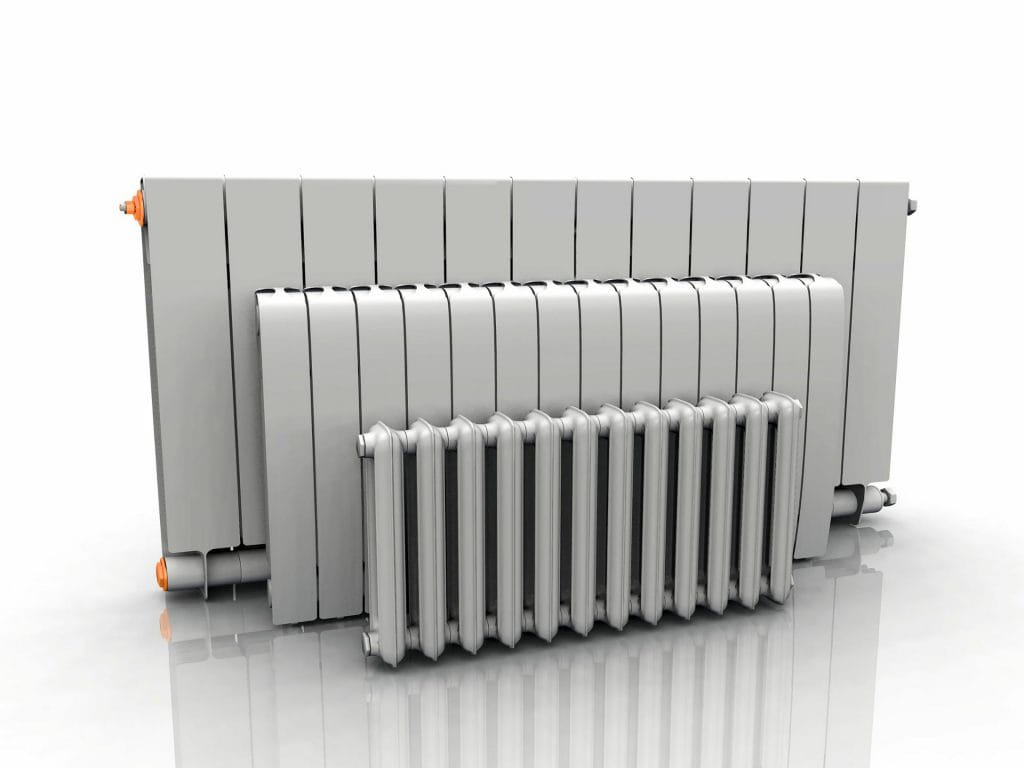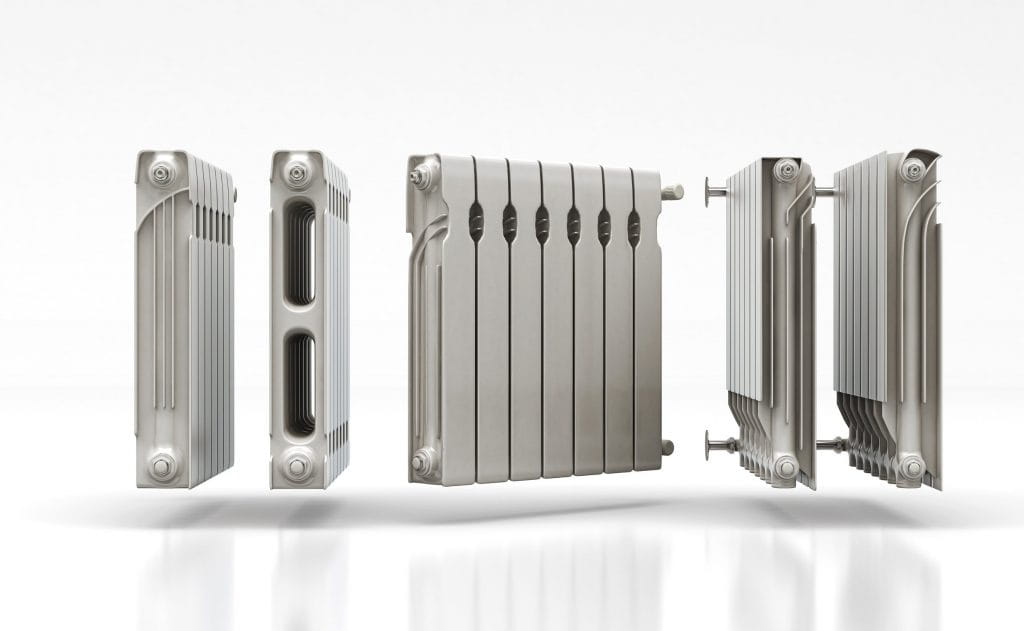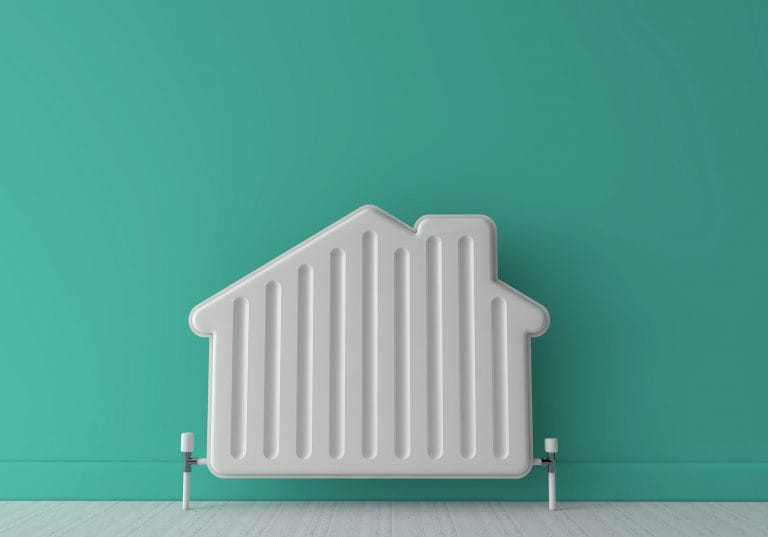A radiator or radiating body, is a typical part of a heating system used for civil and/or industrial use.
The name is no longer used in a technical context, but still lives on in common language to refer to single radiators.
The radiating body is an innovation that was introduced rather recently.
It was invented and patented by Pietro de Zanna in 1830, and initially functioned on compressed air.
In 1855, the Italo-Russian inventor Franz Karlovich San Galli invented the water-powered radiator, making a considerable contribution to the development that would lead to modern central heating systems.
This invention also inspired the water-powered heat convector that uses a fan to speed up the thermal exchange and aid heating considerably.

Installing and attaching radiators
A radiator is usually installed in each room, connected by pipes to a boiler, that sends hot water to the radiator via pumps.
To date it is possible to install radiators that exploit low temperatures such as radiating floors.
The boiler is usually connected to a thermostat that regulates whether the heating is turned on or off depending on the desired temperature.
Radiators can be placed in different positions according to need.
For a radiator to heat up a room effectively, it must be installed accurately:
- Installing a radiator on the wall
This type of installation provides for the use of:
- Full-length brackets for radiators with supports,
- Brackets and separators for radiators without supports.
- Expanding brackets for plaster walls or with thermal cladding.
- Installing a radiator on the floor
Unlike the previous installation method, this provides for the use of:
- Attachments known as feet for fixing to the floor, if it is necessary to clean the back of the radiator.
- Attachments for the screed, immersed directly into the flooring.
For suspended systems, special care must be taken in maintaining distances from side walls, ceilings, the bracket, and the back wall as prescribed by law and recommended by manufacturers, in order to allow the correct circulation of hot air.
In particular, using these attachments has been regulated in EU law, in the VDI 6036 guidelines, to remedy the most common domestic accidents.

Radiator materials: aluminium, cast iron or steel
A radiator is usually made up of elements, modules attached to each other in a row to reach the size of radiating surface area desired.
The modules can be made from steel, cast iron or aluminium.
The yield and price of a radiator depend on the material, on the size and the number of elements it is made up of.
Again, there are various types of radiator:
- The classic cast iron radiators, that we find in old houses and no longer used, that maintain heat longer even when turned off;
- radiators in aluminium, that heat up immediately;
- radiators in steel, that have an intermediate heating and cooling time, as well as a resistance, corrosion and weight midway between the two.
Let's look at them in detail.

Steel, aluminium or cast iron radiators? Which is the most worthwhile?
Aluminium radiators are less expensive and easier to build, as well as being much lighter and less bulky.
However, compared to cast iron radiators, they can corrode is the water's pH is higher than 7, i.e. alkaline.
Aluminium radiators transmit the noise of circulating water into the room.
On the other hand, unlike aluminium or cast iron radiators, steel radiators cannot be added to, it is impossible to change their dimension by adding or removing single heating elements.
Emissivity is also important for the radiation of a radiator, which is much higher in cast iron (especially if polished) than aluminium.
Steel radiators have variable emissivity rate, but if laminated they are not much different than cast iron ones.
For this reason, radiators must be painted with high-emissivity matte paints, to help radiation.
Aluminium radiators are usually the cheapest, although they hold less heat, so heat up rooms less;
Cast iron radiators, much used in the past, are more expensive but heat up much more.
Lastly, steel radiators are an excellent compromise between cast iron and aluminium.
The latter, together with a good boiler, allow you to save 8-10% on your bill compared to cast iron and don't cost much more.

Which is the best radiator in terms of performance?
Actually the difference between aluminium radiators and steel radiators is not their yield but their thermal inertia.
Aluminium radiators heat up quicker but also cool down quicker, while to the contrary, steel takes longer to heat up, but also longer to cool down.
Therefore, steel radiators consume less fuel than aluminium radiators.
Don't forget however, that with a low-temperature system, steel and aluminium heating elements yield in exactly the same way, i.e. half of what they yield at high temperature.
Also, if you want to use a gas condensation boiler and a low temperature, you should choose high radiators, whether aluminium or steel, and oversize them compared to the room.
If you intend to extend the radiator’s action so that you can work with a flow temperature that is as low as possible, the best choice is aluminium.
On the other hand, if you intend to only turn on radiators when someone is at home or in the office, in the evening, at night and early morning at home for example, or during working hours in an office, the best choice is aluminium.

Maximising saving with IRSAP NOW
But did you know that with a smart heating system like IRSAP NOW you can save even more?
IRSAP NOW is the innovative system that allows you to transform your traditional system into a smart, wireless and multi zone heating system that can be customised for any type of home, and can be controlled remotely via an app.
Thanks to its advanced functions, IRSAP NOW can help your save, by helping you to optimise your consumptions.
For example, in eco mode, you can maximise your heating system sustainability and save money at the same time.
By turning on this mode, your system will turn off a little earlier than the time set, thus reducing consumption and emissions, without having to renounce any comfort.
Every time you set a temperature inside a room, the app will show you whether the temperature is “green” or not by using a leaf symbol.
So, IRSAP NOW has been specifically designed to improve comfort, reduce environmental impact and save money by optimising consumption.
Also, our smart heating system works with both autonomous systems and centralised systems, and is compatible with all radiator brands and the main valve brands.
Our smart thermostatic valves are highly compatible with so many brands thanks to six adaptors supplied in the box.
So, what are you waiting for? Convert your traditional system into a smart heating system!
You can also access the 110% bonus. Find out how to apply for the subsidies provided by the bonus for your heating system.









































